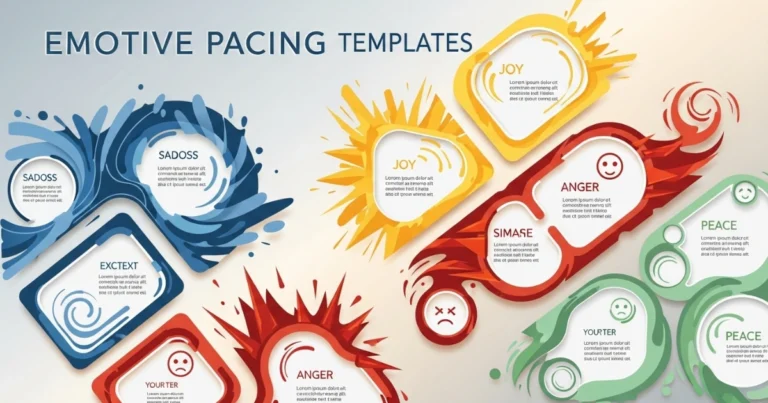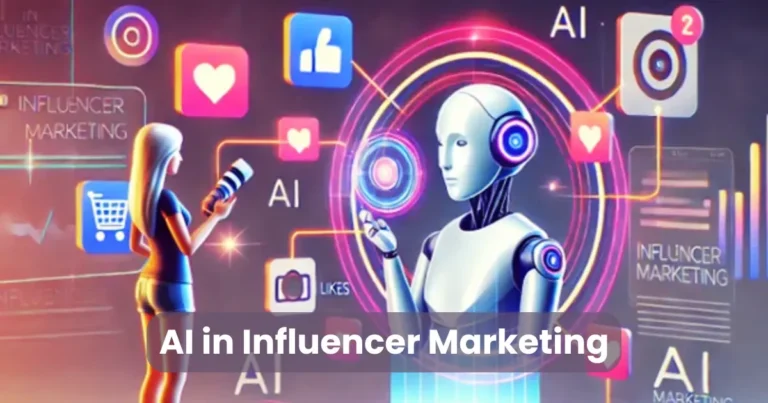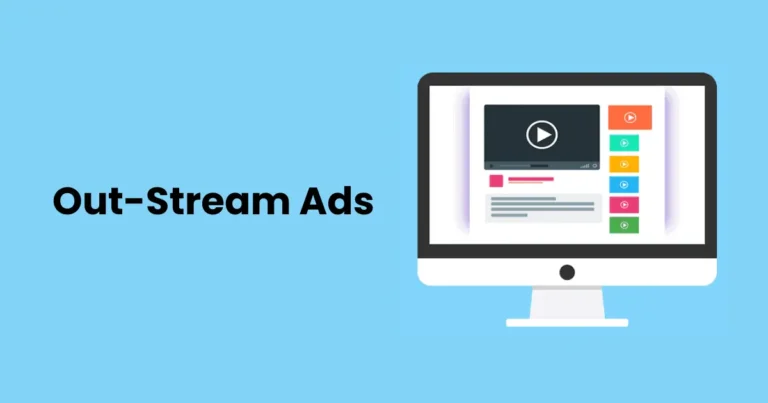AI Analytics for Influencer Campaigns

Contents
- 1 What is AI Analytics in Marketing?
- 2 The Role of AI Analytics in Influencer Campaigns
- 3 Benefits of Using AI Analytics for Influencer Campaigns
- 4 Key Metrics Tracked by AI Tools
- 5 How AI Improves Influencer Selection
- 6 Campaign Optimization Through AI Insights
- 7 Real-Time Monitoring and Performance Prediction
- 8 Challenges and Considerations
- 9 Future of AI in Influencer Marketing
In the evolving world of digital marketing, AI analytics for influencer campaigns has quickly become a cornerstone of data-driven decision-making. Through automated insights and machine learning, influencer strategies are no longer shaped by intuition alone. Instead, intelligent systems now provide real-time performance metrics, enabling brands to evaluate the success of their influencer collaborations with precision.
Moreover, as competition increases and consumer behavior becomes more dynamic, traditional methods have been replaced by smarter, faster alternatives. By using AI, brands can streamline their campaign processes, reduce manual effort, and enhance ROI with minimal risk. As a result, the efficiency and effectiveness of influencer campaigns have been significantly improved allowing marketers to stay ahead in a highly saturated marketplace.
What is AI Analytics in Marketing?
AI analytics in marketing refers to the application of artificial intelligence technologies—such as machine learning, data mining, and natural language processing—to gather, interpret, and utilize vast amounts of marketing data. In recent years, this approach has transformed how campaigns are planned, executed, and evaluated.
Traditionally, marketers relied on manual data interpretation and historical trends. However, with the rise of automation, these processes have been expedited and refined. Through AI tools, customer behavior is predicted, engagement levels are forecasted, and content strategies are dynamically adjusted.
More importantly, AI analytics for influencer campaigns enables marketers to process data at a scale and speed that human teams simply cannot match. For example, user sentiment, influencer credibility, and performance metrics can all be analyzed simultaneously. Consequently, strategies can be optimized in real time and refined continuously throughout the campaign lifecycle.
As marketing becomes more data-centric, AI analytics ensures that every decision is backed by accurate, actionable intelligence rather than assumption.
The Role of AI Analytics in Influencer Campaigns
The success of influencer marketing depends largely on how well data is understood and used. In this context, AI analytics for influencer campaigns plays a crucial role by offering brands deep insights into what works and what doesn’t. Instead of relying on surface-level metrics, advanced AI tools dive into complex data patterns, uncovering trends that human analysis might miss.

First and foremost, influencer performance can be evaluated more accurately. Metrics such as audience engagement, follower authenticity, and content reach are continuously analyzed. Based on this data, underperforming influencers are identified, and top performers are highlighted all with minimal human intervention.
Moreover, content effectiveness is enhanced through AI-driven feedback. Posts are not only measured in terms of likes or comments but also by sentiment, relevance, and timing. As a result, more personalized and impactful campaigns can be crafted.
Additionally, audience behavior is monitored in real-time. Because of this, shifts in preferences or engagement habits are quickly detected. Campaigns can then be adjusted mid-flight to maximize impact.
Overall, with AI analytics for influencer campaigns, every stage from planning to execution and post-analysis is guided by data. This ensures smarter budget allocation, stronger collaborations, and improved return on investment.
Benefits of Using AI Analytics for Influencer Campaigns
Numerous advantages can be gained when AI analytics for influencer campaigns is implemented effectively. By automating data analysis and enhancing strategic decision-making, brands are able to drive better results with fewer resources.

1. Improved Influencer Selection
Through AI, influencer profiles are evaluated based on performance history, audience authenticity, and engagement rates. As a result, ideal brand-influencer matches are found quickly and with more accuracy.
2. Faster Campaign Execution
Campaign workflows can be streamlined, as manual data processing is replaced with automated systems. Tasks like tracking reach, analyzing sentiment, and spotting fake followers are handled instantly.
3. Higher Return on Investment (ROI)
Budgets are optimized more effectively. Since influencers with the best performance potential are prioritized, wasted ad spend is reduced, and returns are maximized.
4. Real-Time Performance Monitoring
With AI analytics for influencer campaigns, results are not just reviewed post-campaign—they are tracked live. If performance dips, adjustments are suggested immediately, increasing the campaign’s overall effectiveness.
5. Data-Driven Content Strategy
Content ideas are often generated through AI-driven insights. Posts that resonate most with specific audiences are identified, allowing marketers to replicate success in future campaigns.
6. Audience Behavior Analysis
Demographic and behavioral patterns of the influencer’s followers are monitored. As a result, brands can tailor their messaging to fit the preferences and habits of target audiences.
In short, the strategic use of AI analytics for influencer campaigns enables marketers to make smarter decisions, reduce guesswork, and create campaigns that perform exceptionally well in a crowded digital space.
Key Metrics Tracked by AI Tools
When AI analytics for influencer campaigns is employed, performance measurement becomes more precise and comprehensive. Rather than relying on vanity metrics alone, AI tools focus on deeper indicators that reveal the true impact of influencer efforts.

1. Engagement Rate
The ratio of likes, comments, and shares to overall followers is calculated automatically. This metric helps determine how actively an audience is interacting with influencer content.
2. Follower Authenticity
Fake or inactive followers are identified through behavior analysis. With AI, audience quality can be validated instantly ensuring campaigns target real and engaged users.
3. Audience Demographics
Key audience traits such as age, gender, location, and interests are tracked. This allows marketers to verify if the influencer’s followers align with the campaign’s target demographic.
4. Click-Through Rate (CTR)
CTR measures how many users clicked on a link embedded in an influencer’s post. This metric is vital in assessing how persuasive and action-driving the content is.
5. Conversion Rate
AI tools trace the user journey from influencer content to completed actions—such as purchases, sign-ups, or downloads offering a direct view of ROI.
6. Content Sentiment Analysis
Natural language processing is used to evaluate the tone of comments and mentions. Positive, neutral, or negative sentiments are categorized to measure public perception in real time.
7. Hashtag and Keyword Effectiveness
AI tracks which hashtags and keywords generate the most engagement. Accordingly, strategies can be refined for greater visibility and reach.
By tracking these metrics consistently, AI analytics for influencer campaigns ensures that every decision is supported by actionable data. Consequently, campaign performance is no longer based on assumptions—but on measurable, real-time insights.
How AI Improves Influencer Selection
One of the most critical aspects of influencer marketing is selecting the right creator. With AI analytics for influencer campaigns, this process is not only simplified but also significantly improved through data-backed insights.

Instead of relying on follower counts or personal preferences, influencer selection is driven by performance history, audience alignment, and engagement quality. By leveraging machine learning algorithms, vast databases are scanned, and influencers are ranked based on how well they meet campaign objectives.
To begin with, AI tools assess historical data from previous collaborations. Engagement trends, content consistency, and follower behavior are evaluated. Consequently, influencers with genuine influence rather than just popularity are prioritized.
Moreover, audience analysis is enhanced. Demographics, interests, and geographic data of an influencer’s followers are reviewed to ensure compatibility with a brand’s target audience. As a result, mismatches are avoided and audience resonance is increased.
In addition, fraudulent behaviors such as fake followers, purchased likes, or engagement pods are detected and flagged automatically. These insights would otherwise be missed in manual reviews.
Finally, predictive modeling is applied to forecast future campaign success. By analyzing past performance across various niches, AI can suggest the most effective influencers for specific industries or goals.
Campaign Optimization Through AI Insights
Once influencers are selected and campaigns are launched, the next crucial step is ongoing optimization. This is where AI analytics for influencer campaigns demonstrates its full power by offering real-time insights that guide data-driven improvements throughout the campaign lifecycle.
First, content performance is monitored continuously. Posts with low engagement or negative sentiment are quickly identified, and suggestions for adjustments such as changing captions, formats, or post timing are automatically generated. Because of this, underperforming content can be improved mid-campaign instead of waiting for final results.
Additionally, audience behavior is tracked across platforms. If a particular demographic engages more actively on one platform over another, campaign focus is shifted accordingly. This dynamic optimization ensures that effort and budget are directed where they are most effective.
Budget allocation is also optimized. Spend is redistributed toward high-performing influencers or channels, while low-impact areas are scaled back. As a result, ROI is improved without increasing the total investment.
Furthermore, AI provides A/B testing recommendations. Variations of visuals, hashtags, or call-to-actions are tested simultaneously, and winning combinations are promoted automatically. These insights were once obtained manually but are now streamlined for speed and accuracy.
With AI analytics for influencer campaigns, optimization becomes an ongoing process rather than a post-campaign analysis. Consequently, brands are empowered to adapt quickly, respond to audience feedback, and drive stronger outcomes in every campaign.
Real-Time Monitoring and Performance Prediction
In today’s fast-paced digital landscape, the ability to track and adjust campaigns in real time is a game-changer. AI analytics for influencer campaigns empowers brands with continuous monitoring and performance prediction, transforming how campaigns are managed and optimized.

Through AI, influencer content is monitored in real time, providing detailed feedback on engagement rates, follower reactions, and content sentiment. Rather than waiting for campaign completion to assess success, marketers can evaluate performance as it happens, enabling immediate adjustments.
Predictive analytics takes this one step further by forecasting future campaign outcomes. By analyzing historical data, AI can predict which types of posts, influencers, or strategies will yield the best results. These predictions are based on a combination of influencer behavior, audience interactions, and broader market trends.
As a result, AI ensures that campaigns are always aligned with audience preferences. If a shift in audience sentiment is detected or engagement starts to decline, the system immediately notifies the marketing team. This allows for quick corrective actions—such as switching up the content, changing posting times, or even replacing influencers—before issues escalate.
Moreover, performance predictions help marketers anticipate campaign ROI with greater accuracy. Budget allocation can be adjusted dynamically, and resources can be focused on high-performing areas to maximize return.
With AI analytics for influencer campaigns, real-time data not only improves decision-making but also prevents potential losses, ensuring that campaigns stay on track and achieve optimal results.
Challenges and Considerations
While AI analytics for influencer campaigns offers numerous advantages, it’s important to recognize that its implementation also presents certain challenges and considerations that need to be addressed for maximum effectiveness.
1. Data Privacy Concerns
As AI tools collect and analyze vast amounts of personal and behavioral data, concerns about privacy and data security have emerged. Brands must ensure that influencer campaigns comply with privacy regulations, such as GDPR, to avoid potential legal issues.
2. Dependence on Data Quality
The effectiveness of AI analytics is directly tied to the quality of the data it processes. Inaccurate, incomplete, or biased data can lead to flawed insights and misguided decisions. To mitigate this, proper data cleaning and validation processes must be in place before relying on AI for decision-making.
3. Integration Complexity
Integrating AI tools with existing marketing software or platforms can be a complex process. While many AI tools are user-friendly, the integration with legacy systems might require additional technical expertise. Therefore, brands should plan for a smooth transition and invest in necessary resources.
4. Over-Reliance on AI
Although AI analytics can offer powerful insights, it’s crucial not to rely solely on automation. Human intuition and creativity still play an important role in campaign strategy. AI should complement human decision-making, not replace it entirely, to maintain a balance between data-driven strategies and creative vision.
5. Cost of AI Implementation
For smaller businesses, the cost of implementing AI tools can be a significant consideration. Advanced AI platforms may require a considerable upfront investment, which might not always be feasible for every brand. Weighing the cost against potential long-term benefits is essential for making a sound financial decision.
while AI analytics for influencer campaigns offers remarkable benefits, careful consideration of these challenges is necessary. By addressing potential pitfalls and implementing best practices, brands can maximize the value derived from AI in influencer marketing.
Future of AI in Influencer Marketing
The future of AI analytics for influencer campaigns is incredibly promising, with emerging technologies set to revolutionize how brands collaborate with influencers. As AI continues to evolve, its role in influencer marketing will only expand, offering even more sophisticated tools for campaign optimization and audience engagement.

1. Enhanced Personalization
AI’s ability to process vast amounts of data will enable brands to craft hyper-personalized influencer campaigns. By analyzing individual audience preferences, AI can suggest influencers whose followers exhibit specific traits, ensuring that marketing efforts are more targeted and relevant.
2. Greater Automation
As AI tools advance, automation will play an increasingly significant role in influencer marketing. Campaign monitoring, content scheduling, and performance analysis will become even more automated, allowing marketers to focus on high-level strategy while AI handles the execution.
3. Predictive Analytics for Future Trends
Looking ahead, predictive capabilities will be even more powerful. AI will be able to forecast not only campaign performance but also emerging trends, shifts in consumer behavior, and potential market disruptions. This proactive approach will enable brands to stay ahead of the curve and adjust their strategies in real-time.
4. AI-Driven Creative Assistance
In the future, AI may take on more creative tasks in influencer campaigns, such as generating content ideas, drafting captions, or even suggesting visual elements. This could help influencers optimize their content to meet evolving audience expectations without compromising creativity.
5. Improved Influencer Identification and Validation
AI will continue to refine the process of identifying the most suitable influencers for campaigns. By incorporating deeper insights into audience demographics, engagement quality, and sentiment analysis, AI will ensure that brands collaborate with influencers who align with their values and goals.
6. Advanced Real-Time Interaction
Real-time monitoring will become more advanced, allowing brands to interact with influencers and their audiences instantly. AI-powered chatbots and virtual assistants may enable brands to engage in conversations with potential customers through influencers, creating a more seamless and interactive experience.
AI analytics for influencer campaigns will continue to reshape the influencer marketing landscape. With enhanced personalization, greater automation, and more advanced predictive tools, AI will empower brands to create more effective, data-driven campaigns that deliver tangible results.
Conclusion
AI analytics for influencer campaigns is revolutionizing the way brands approach digital marketing. By providing deep insights into audience behavior, influencer performance, and campaign effectiveness, AI enables marketers to make data-driven decisions that lead to better results and higher ROI. With the power of AI, influencer campaigns can be optimized in real time, ensuring that brands stay ahead of the competition and achieve their marketing goals with precision. As AI technology continues to evolve, its role in influencer marketing will only become more vital, offering new opportunities for brands to connect with their audiences in meaningful and impactful ways.






